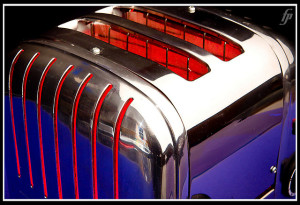By: David W. Bertoni

Make your brand more than a name!
Every entrepreneur or inventor dreams big dreams. That is what keeps entrepreneurs going, an idea that won’t let them stop no matter how many obstacles are in the way. There are those that struggle along and those whose success was so large that their dream has transformed the business or lives of millions around the globe, and are often rewarded with fantastic wealth. Each of these success stories ends in the creation of a great brand. So, my hypothesis is this: folks that dream in brands take a more direct route to success.
What’s in a Name? Nothing and Everything
Here are two definitions of the word brand as it pertains to business:
“A brand is a name used to identify and distinguish a specific product, service, or business. A legally protected brand name is called a proprietary name.”
and,
“A brand is the essence or promise of what will be delivered or experienced.”
Many people think of brands in the first and more limited sense, and conger up names like Coca-Cola, GE, Johnson & Johnson, Disney, Mercedes-Benz, Apple, IKEA, Nokia, McDonalds, Google, MTV, Visa, etc. Business Week and Interbrand annually publish a list of the year’s 100 top global brands. Brands that have global name recognition seem to fall into three categories: industrial and large commercial companies, ultra-exclusive luxury brands and consumer product makers. The Industrial leaders are brands like Siemens, JP Morgan, Oracle and the like that have gobbled up hundreds of up-and-comers to become the global behemoths they now are. The ultra-sheik Louis Vitton, Gucci, Rolex brands occupy positions in the stratosphere due to exclusive distribution in a very high-priced luxury market. Consumer mega brands such as Coca-Cola, Marlboro, Budweiser and Gillette typically crush the up-and-comers with the weight of their advertising budgets.
Products have their own brand recognition that can be quite impactful, sometimes having as much impact as the company name: Procter & Gamble’s Colgate, Apple’s iPod, Microsoft’s Windows, J&J’s Band-Aid, etc. In most cases, buyers are not interested in the company’s stock or committing to all its products, but only buying a product with a trusted name.
Dream Name Today – Gone tomorrow!
Global brands pay a king’s ransom to the most influential advertising agencies and public relations firms to create and manage a brand image. Then they have to spend the queen’s ransom to the media outlets that shoehorn the message into the minds of potential buyers. All that, to encourage someone to end his or her affair with a competing product and try theirs. After a purchase, products will get a test result from buyers on a scale that goes from WOW, through YAWN, and all the way to LET DOWN and OFFENDED.
Stories about bad brand experiences travel faster than positive ones and that the negative experience has the half-life of plutonium, and an effect that is just as toxic. The long slog of creating a great brand from hard work on product quality and service can be undone incredibly quickly. How many friends did you tell about your latest good product experience, versus the latest product disaster, and after two years, which one is still the freshest in your mind? The negative experience? Yep, me too. Recall the fall of one of the strongest global brands in sports – Tiger Woods. The eventual resurrection of his image will be a case study in brand marketing, and you can bet he has the best and brightest on the case.
Brand Wars – Kick ‘em in the Experience!!
Most of us are competing against other company brand reputations and known product names, and let’s face it, if it were just a question of brand recognition, new products and companies would not stand a snowball’s chance in hell. Pan Am would still be in business and Jet Blue would have been stillborn along with Southwest and Virgin. There would not be a FedEx, Toyota, iPhone, Subway, or Dell. The reason new products and companies emerge and overwhelm the market, driving their competitors to extinction, is due to the second and more important element of a brand – the essence or promise of what will be delivered or experienced – the brand experience! The buyer’s true experience with a product is simply much more powerful than a company’s expensive and carefully crafted hologram of its brand. You can’t compete with the 100 top brands in the world or the top branded products on brand awareness, but your brand and product CAN compete effectively against their brand experience.
Senior management simply must focus its attention, and the attention of the entire organization, on the experience a buyer or user has with the brand. The experience extends to all levels of interactions with the product and company: the feel of the controls, the quality of the finish, durability, its precision, perception of weight, the packaging, the user manual, customer service, billing, answering inquiries, the website, even the ambience in the office if there is ever a reason to visit. Does that sound daunting, or does it sound like a competition that you are ready to take on? I believe it is a winnable battle and one that I would rather fight than how much I can pay for PR and advertising, or having the cleverest arguments spoken by the most well known celebrities.
If your company’s attention is focused on your customer’s experience, you and your customer’s goals will be aligned, and that puts you on the surest path to business success.
When Management Killed the Dream – Bonuses All Around!
If it is that simple, why do big brands with the best talent and the best credentials fail? In many cases, the company’s leaders have put the primary focus on the wrong goals.
Consider this scenario. A few years back, engineering found a way to significantly reduce the cost of the product, operations cut logistical costs, there was a killer PR campaign and the rate of product returns showed a significant decline. Great year! The managers all took huge bonuses and the company was on the skids a few years later. This scenario is remarkably common with companies churned by private equity firms.
When engineering is primarily focused on ways to reduce the cost of the product, rather than trying to solve new customer demands with creative (and, lower cost) solutions, the company’s most creative talent is no longer focused on the ultimate brand experience. When logistics are optimized to minimize warehouse space but doesn’t get the goods where and when the market needs them, orders will flow to the competitors. When marketing is spending more time with the PR firm than with customers, they may get out-flanked by a ground swell buzz in the streets about a new, agile competitor. When customer service is judged on how well it decreased the company’s warranty replacement rate, rather than how well it found creative solutions to customer problems, your client’s next call may be to your competitor. As management succeeds in getting all of the company’s functions to focus less on the customer’s experience, the cumulative effect leads to poor sales, which leads to more cost cutting, and if the focus does not get back to the customer’s brand experience, such short-sighted focus can lead a company to the brink of extinction.
That is not to say that cutting costs and expanding the reach of the company through advertising and public relations to build sales is not important. A financially healthy company with solid margins can focus more resources on developing new products, and afford top-notch employees to innovate. Never forget that the customer’s buying power is selfishly concerned with satisfaction with the product, service and experience. The customer is ultimately quite fickle and brand loyalty has its limits. It is often said that business would be so much easier if it weren’t for the customers.
Brand Dreaming is Like Going on a Blind Date
Brand dreaming is visioning ideal customer/brand experiences with your company and products, even if (and, maybe especially if) today’s reality is a lo-o-o-o-o-o-ng way from ideal. Dreaming in brands is an exercise in perspective and awareness. The hardest change is the perspective shift – from seeing your product or service from your normal point of intimate understanding, which can cloud perception of the most obvious, to the point of view of a person seeing it for the first time. The familiar becomes new. Try to imagine that it is a blind date and you have just opened the front door. Imagine the process of product discovery from the beginning, when the product is seen at a distance for the first time. Does the first impression suggest that the product features and benefits meet the requirements of the purchaser, and does it look like it does what your sales material says it does? Does it look functional and efficient? As a buyer moves closer, he or she will begin to discover the details and form an opinion of the quality. Now in hand, what is the first impression of weight, finish and feel? That first, brief interaction is so important, because if the impression isn’t very good, it’s all you are going to get. The potential buyer didn’t even make it to the point where he or she begins to learn about all of your product’s abilities, fine qualities and charms.
If you are lucky enough to make it past the speed-dating, beauty pageant of the first impression, the discovery begins in earnest. If the product is technical and complex, there is so much to learn about all of the uses, features and capabilities (and so little time). Does your product speak for itself or does it require a matchmaking sales aid? Hopefully, your brand dream visualized the product so that it’s most important features stand out and lead naturally to the discovery of the next layer of features. Often, the most relevant benefits to the buyer remain safely hidden away from all but the technical support staff and the most tenacious customer. If a point-of-purchase aid, video or interactive demo tool is required, it is as important as the product itself – don’t skimp!
Getting the idea? How was your imagined first date with your own product? Take the point of view of the least informed and most attentive potential customer and you will discover much about your own products. It doesn’t matter if it is a piece of hardware, software or a service. Once the process of brand experience dreaming becomes more comfortable, imagine the same uninformed and attentive customer calling or visiting your place of business, from first greeting to follow-up. Every touch point leaves an impression. Why not make the impression a good one.
When Your Blind Date is in a Bad Mood – It’s Normal!
It is enough of a challenge to envision converting a neutral potential customer into an advocate of your brand. Lucky you if you should ever encounter a neutral prospective customer. If your PR, advertising, word-of-mouth and sales effort are hitting on all cylinders, the prospective customers might be neutral about your company at the first meeting. However, that is not the normal state of affairs in today’s business environment. More often, at first meeting the person is distrustful of another sales pitch, dismissive of some new gadget, or anticipating another broken promise from another flimflam sales person. When you can dream with great clarity how to take the typically cantankerous American customer from combatant to advocate, you win your black-belt in the Jujitsu of brand dreaming.
Dreams Need Fuel – Fill ‘Er Up!
You need to feed the dream machine, and the fuel comes from customers. You must spend time in the field with customers, potential customers and your competitors’ customers. That is where you see people using products in ways that could never have been imagined in a design meeting. Your product, which you crafted to be the pinnacle of efficiency, will be used up-side-down, inside-out, backwards, at half speed, double time and inverted, all to the horror of the designer, but maybe to the delight of the buyer. Inventive misuse is often the inspiration for the next R&D meeting.
Hail to the Chief – The Chief Dreaming Officer
Brand dreaming is like a gym membership, the first few visits may be tough, but soon the results begin to show off that new and fabulous you. The first brand advocate converts need to come from your own company before imagining that you are going to convert the masses. Everybody’s trip will be much smoother if the company is on the same compass heading as the market. Then as your improved brand experience first date leads to more lasting relationships, you may create some distance between you and the competition. When others in the company begin to see the competition in the rearview mirror, everyone becomes a brand advocate. If engineering is going to find a way to reduce the cost of materials and production, that’s great, but don’t let them lose site of the objective – a win-win improvement – more WOW for the money. Brands loyal to their customers create customers loyal to the brand. Why would a customer whose buying power is selfishly concerned with satisfaction with the product, service and experience do anything else?
And, when the competition has you backed into a corner – Kick ‘em in the Brand Experience!
Note: This post was originally published in ‘The Marketer’s Almanac’



